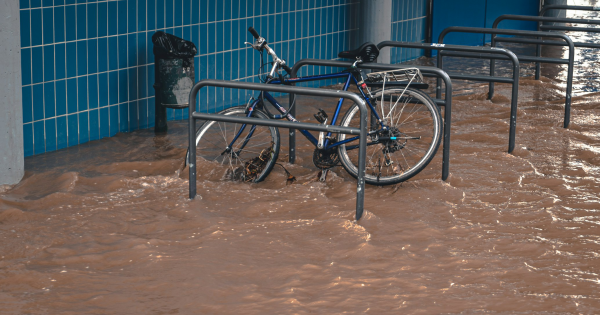Responding To A Flood Warning: Essential Actions Based On NWS Advice

Table of Contents
Understanding Flood Warnings and Watches
The first step in flood preparedness is understanding the difference between a flood watch and a flood warning. Knowing the distinction will help you react appropriately and swiftly.
The Difference Between a Watch and a Warning:
-
Watch: A flood watch means that conditions are favorable for flooding to occur. Flooding is possible. This is your time to prepare. Gather essential supplies, review your evacuation plan, and monitor weather updates closely.
-
Warning: A flood warning means that flooding is occurring or is imminent. This is a serious situation requiring immediate action. You must follow all instructions from local authorities and emergency services.
The NWS communicates warnings through various channels, including:
-
NOAA Weather Radio: A dedicated weather radio is an invaluable tool for receiving immediate alerts, even during power outages.
-
Mobile Alerts: Sign up for emergency alerts on your smartphone through your local emergency management agency or the NWS app. These alerts will provide real-time updates on flood warnings and other severe weather events.
-
Local News Media: Television and radio stations provide up-to-date information about weather conditions and emergency instructions.
While there aren't standardized levels for all flood warnings, some areas might have different severity levels (e.g., minor, moderate, major) within a warning, indicating the potential extent of the flooding. Always check your local NWS forecasts for region-specific details.
Immediate Actions Upon Receiving a Flood Warning
When a flood warning is issued, time is of the essence. Your immediate response will significantly impact your safety and the safety of your family.
Evacuate if Instructed:
If authorities issue an evacuation order, leave immediately. Do not delay. Flooding can occur rapidly and with little warning.
- Gather essential documents and valuables: Passport, insurance papers, important medical information, etc. Place them in waterproof bags.
- Turn off utilities (gas, electricity): This helps prevent further damage and electrocution hazards.
- Move to higher ground or a designated shelter: Follow official evacuation routes and directions from emergency services.
- Do not drive through flooded areas: Even shallow water can hide unseen dangers like washed-out roads or electrical hazards. Floodwaters can also sweep vehicles away, quickly putting lives at risk.
If Evacuation Isn't Ordered:
If you're not under an evacuation order, take these steps to protect yourself and your property:
- Move valuable items to higher levels: Furniture, electronics, and important documents should be moved to upper floors or elevated areas.
- Unplug electrical appliances: Prevent electrical shocks and equipment damage.
- Protect your home by moving furniture and appliances: This minimizes potential damage from rising water.
- Monitor the situation closely: Stay informed about the flood's progression through official channels.
Protecting Yourself and Your Family:
- Stay informed through official sources (NWS, local authorities): Do not rely on social media for critical information; stick to verified sources.
- Never walk or drive through floodwaters: The dangers of strong currents, unseen debris, and electrical hazards cannot be overstated.
- Be aware of the dangers of downed power lines: Never approach or touch downed power lines. Report them to the authorities immediately.
- Have a communication plan with family members: Establish a meeting point in case of separation.
Post-Flood Actions
Once the floodwaters recede, returning home and cleaning up require caution and preparedness.
Returning Home Safely:
- Check for structural damage before entering your home: Look for cracks in the foundation, damage to walls, and other signs of structural compromise.
- Avoid floodwaters – they may be contaminated: Floodwaters often carry harmful bacteria, chemicals, and debris.
- Report damage to local authorities: This helps assess the overall impact and facilitates aid distribution.
- Take photos of the damage for insurance purposes: Document all damage thoroughly for your insurance claim.
Cleaning Up After a Flood:
- Wear protective gear (gloves, boots): Protect yourself from contamination and debris.
- Discard contaminated food and water: Food exposed to floodwater is unsafe to consume.
- Use caution when handling electrical appliances: Ensure they are completely dry before use to prevent electrical shock.
- Dispose of waste properly: Follow local guidelines for discarding flood-damaged materials.
- Contact professionals for major repairs and cleanup: Major repairs often require specialized skills and equipment.
Flood Insurance and Assistance:
- Know your flood risk and consider purchasing flood insurance: Flood insurance is not usually included in standard homeowner's insurance.
- Contact FEMA or other relevant agencies for assistance: Federal, state, and local agencies offer aid and resources to flood victims.
Conclusion
Responding to a flood warning effectively can mean the difference between minor inconvenience and significant loss. By following the advice outlined above and acting quickly when a flood warning is issued by the NWS, you can significantly reduce the risks associated with flooding. Remember, your safety and the safety of your loved ones is paramount. Stay informed, prepare for potential flood warnings, and take immediate action when necessary. Heed all flood warnings and prioritize your safety. Familiarize yourself with your local flood risk and prepare a comprehensive flood safety plan today. Don't wait for a flood warning—prepare for one!

Featured Posts
-
 Decoding The F1 Drivers Press Conference A Comprehensive Overview
May 26, 2025
Decoding The F1 Drivers Press Conference A Comprehensive Overview
May 26, 2025 -
 Perubahan Klasemen Moto Gp Setelah Marc Marquez Menangkan Sprint Race Argentina 2025
May 26, 2025
Perubahan Klasemen Moto Gp Setelah Marc Marquez Menangkan Sprint Race Argentina 2025
May 26, 2025 -
 Choosing The Perfect Nike Running Shoe For 2025
May 26, 2025
Choosing The Perfect Nike Running Shoe For 2025
May 26, 2025 -
 Alberto De Monaco Sus Mellizos Reciben La Primera Comunion
May 26, 2025
Alberto De Monaco Sus Mellizos Reciben La Primera Comunion
May 26, 2025 -
 North Myrtle Beach Facing Public Safety Issues Due To Excessive Water Use
May 26, 2025
North Myrtle Beach Facing Public Safety Issues Due To Excessive Water Use
May 26, 2025
